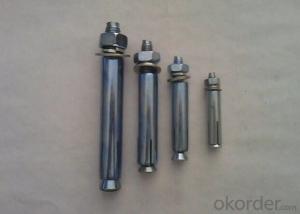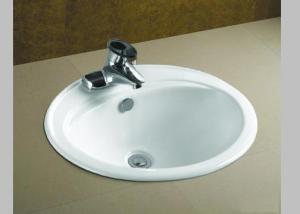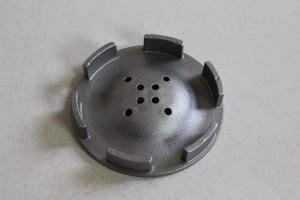Stainless Steel Counter Top
Stainless Steel Counter Top Related Searches
Best Paint For Stainless Steel Blanket Insulation For Steel Buildings Primer For Galvanized Steel Foam Filter For Stainless Steel H S Code For Stainless Steel Surface Grinding Wheels For Stainless Steel Surface Grinding Wheels For Hardened Steel Hole Saw For Stainless Steel Paint For Stainless Steel Stainless Steel For BbqHot Searches
Steel Mesh Panels For Sale Price For Stainless Steel Scrap Scrap Price For Stainless Steel Price For Stainless Steel Stainless Steel Tank For Sale Stainless Steel Sheets For Sale Cheap High Tea Sets For Sale Stainless Steel Tanks For Sale Stainless Steel For Sale High Density Fiberboard For Sale Solar Hot Water Collectors For Sale Scaffolding For Sale In Uae Scaffolding For Sale In Ireland Scaffolding For Sale In Houston Type Of Inverter For Solar Price Of Shipping Containers For Sale Types Of Inverter For Solar Stock Price For Aluminum Used Solar Inverter For Sale Steel Mesh Panels For SaleStainless Steel Counter Top Supplier & Manufacturer from China
Okorder.com is a professional Stainless Steel Counter Top supplier & manufacturer, offers integrated one-stop services including real-time quoting and online cargo tracking. We are funded by CNBM Group, a Fortune 500 enterprise and the largest Stainless Steel Counter Top firm in China.Hot Products
FAQ
- There are several different types of colored finishes available for stainless steel sheets. These finishes are designed to enhance the appearance of stainless steel and provide various aesthetic options. Some of the most common colored finishes include: 1. Mirror Finish: This finish is highly reflective and creates a mirror-like surface on stainless steel sheets. It is achieved by polishing the stainless steel surface to a high gloss. Mirror finishes are commonly used in decorative applications and provide a sleek and modern look. 2. Satin Finish: Also known as brushed or matte finish, this type of finish has a smooth, non-reflective surface. It is achieved by brushing the stainless steel surface with an abrasive material. Satin finishes are commonly used in architectural and industrial applications and provide a clean and contemporary appearance. 3. Colored Powder Coating: Powder coating involves applying a dry powder to the stainless steel surface and then curing it under heat. This process creates a durable and uniform colored finish. Colored powder coatings are available in a wide range of hues, allowing for customization and versatility in design. 4. PVD Coating: Physical Vapor Deposition (PVD) is a process that involves depositing a thin layer of metal onto the stainless steel surface. This coating can be in various colors, such as gold, bronze, black, or rose gold. PVD coatings provide excellent durability and resistance to wear, making them suitable for high-traffic areas or decorative applications. 5. Colored Anodizing: Anodizing is an electrochemical process that creates a protective oxide layer on the stainless steel surface. By using dyes during the anodizing process, a wide range of colors can be achieved. Colored anodized finishes are known for their corrosion resistance and can be utilized in architectural or design-oriented applications. Each of these colored finishes offers unique characteristics and can be chosen based on the desired aesthetic, durability, and specific application requirements. It is important to consider factors such as the level of maintenance needed, environmental conditions, and the intended use of the stainless steel sheets when selecting a colored finish.
- To determine the thickness of a stainless steel sheet, there are several methods you can employ. The most common and accurate way is to use a digital or analog caliper. This instrument allows you to measure the thickness of the sheet with high precision. Simply place the caliper jaws on opposite sides of the sheet and close them until they are snug against the surface. The measurement displayed on the caliper will indicate the thickness of the stainless steel sheet. Another method is to use a micrometer, which is similar to a caliper but provides even more precise measurements. With a micrometer, you can measure the thickness of the sheet by placing the jaws on the edge of the sheet and gently closing them until they touch. The measurement displayed on the micrometer will show you the thickness of the stainless steel sheet. If these instruments are not available, you can also determine the thickness of a stainless steel sheet by referring to its specifications or manufacturer's information. Stainless steel sheets usually come with a label or tag indicating the thickness, which can be easily read and verified. In some cases, you may need to estimate the thickness of a stainless steel sheet without any measuring tools. In such situations, you can compare the sheet to known reference materials of different thicknesses. By visually comparing the sheet to these references, you can make an educated guess about its thickness. However, this method is less accurate and should only be used as a last resort.
- Stainless steel sheets possess resistance against oxidation. Chromium, which constitutes a minimum of 10.5% of stainless steel, generates a chromium oxide protective layer on the surface upon contact with oxygen. Serving as a barrier, this layer hinders oxygen from reaching the steel beneath, effectively preventing oxidation. This corrosion-resistant characteristic of stainless steel renders it an excellent option for numerous applications that involve exposure to moisture or harsh surroundings. Moreover, stainless steel sheets can also incorporate additional alloying elements like nickel, molybdenum, and titanium, thereby augmenting their resistance against oxidation and corrosion.
- Yes, stainless steel sheets are suitable for architectural wire mesh. Stainless steel is a durable and corrosion-resistant material, making it ideal for outdoor applications. It provides strength and stability to the wire mesh, ensuring longevity and aesthetic appeal in architectural designs.
- Indeed, it is possible to bend or shape stainless steel sheets into various forms. This incredibly versatile material, stainless steel, can undergo a multitude of processes, including bending, rolling, and forming, enabling the creation of an extensive array of shapes and structures. The capacity to bend stainless steel sheets renders it highly suitable for implementation in industries such as architecture, automotive, and manufacturing. Furthermore, the exceptional corrosion resistance properties of stainless steel remain intact even after the bending procedure, further solidifying its status as a resilient and enduring material option for diverse applications.
- The price range for stainless steel sheets can vary depending on a few factors such as the thickness, size, and grade of the stainless steel. Generally, the price range for stainless steel sheets starts at around $30 per square foot for thinner sheets and can go up to $150 per square foot for thicker or higher-grade sheets. It's important to note that prices can also be influenced by market conditions and supplier pricing policies, so it's always a good idea to compare prices from different suppliers before making a purchase.
- There are several different finishes available for stainless steel sheets, each offering a unique look and level of protection. 1. No. 1 Finish: This is the most common and basic finish for stainless steel sheets. It is a hot-rolled finish that appears dull and rough, with visible grain lines. It is typically used for industrial applications where appearance is not a major concern. 2. No. 2B Finish: This is a bright, cold-rolled finish that is slightly reflective. It has a smooth surface with a matte finish and is commonly used for decorative purposes, such as in architectural applications or for kitchen appliances. 3. No. 4 Finish: Also known as brushed or satin finish, it has a fine polishing grit line that creates a distinctive look. This finish is often used for decorative applications, such as for elevator doors or trim, and can hide minor surface imperfections. 4. No. 8 Mirror Finish: This is the most reflective finish available for stainless steel sheets. It has a highly polished, mirror-like surface that is smooth and shiny. This finish is often used for decorative purposes, such as in architectural features or decorative trim. 5. Hairline Finish: This finish features a very fine, brushed texture that is similar to the grain of hair. It provides a subtle, elegant appearance and is commonly used for decorative and architectural applications. 6. Embossed Finish: This finish involves creating a pattern or design on the surface of the stainless steel sheet through embossing or stamping. It adds texture and visual interest to the sheet and is often used for decorative purposes. It is important to note that the availability of these finishes may vary depending on the supplier and the specific stainless steel grade being used.
- There are various options available for protecting stainless steel sheets from corrosion, scratches, and other damage. Each option offers different levels of protection and can be chosen based on specific needs. One commonly used method is the application of a thin, adhesive film onto the stainless steel surface. This film acts as a barrier, safeguarding the sheet from scratches, dirt, and other contaminants. Typically, this film is removed after the sheet is installed. Another popular option is PVC coating, which involves applying a thicker and more durable layer of polyvinyl chloride onto the stainless steel. This coating provides excellent corrosion resistance and is available in different colors and finishes. It can be applied through a process called powder coating. Alternatively, a layer of paint can be applied to the stainless steel surface through spray painting or electrostatic coating methods. Paint coatings not only protect against corrosion but also enhance the appearance of the sheet. Passivation is a chemical process that removes iron from the stainless steel surface, creating a protective oxide layer. This layer improves the sheet's resistance to corrosion and is commonly used in industries with aggressive environments. Electropolishing is a process that removes a thin layer of metal from the stainless steel surface, resulting in a smooth and clean finish. It not only enhances the appearance but also increases the sheet's corrosion resistance. Metal plating involves applying a thin layer of another metal, such as zinc or nickel, onto the stainless steel surface. This provides sacrificial protection, as the plated metal corrodes instead of the underlying stainless steel. Metal plating is commonly used in outdoor applications exposed to harsh environments. When selecting the appropriate surface protection method, it is crucial to consider factors such as the environment, intended use, and aesthetic preferences. These factors will help determine the most suitable option for protecting the stainless steel sheet.















































